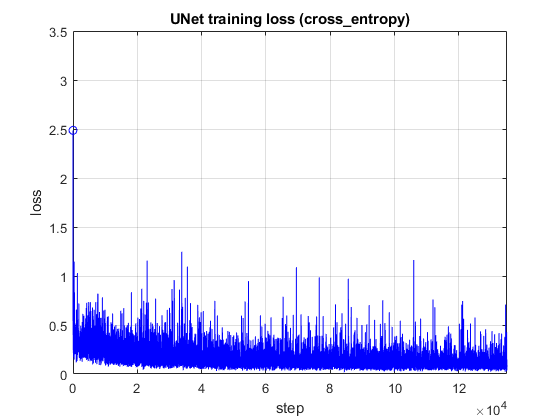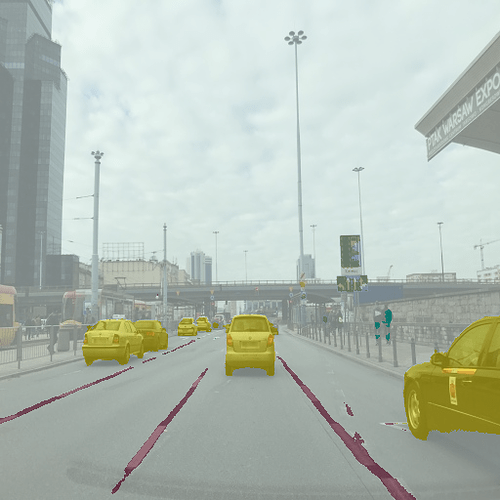So, do you mean you can train/inference well with GTX 1080 ?
No I can’t. Sorry I was thinking that GTX 1080 was using Volta, but it’s based on Pascal which is even older. So my hypothesis is that UNet requires hardware which is newer than Volta. Of course that’s just a guess, but I don’t know what else could explain the situation.
No, it does not related to the Volta. For training Mapillary Vistas, you can refer to Different result between tlt-infer and trt engine unet segmentation model
Yes, in that topic he/she is using Nano, which according to Wikipedia was released in 2019, which means it’s newer than V100 or GTX 1080.
Well at least for inference. Not sure what was used for training.
Not correct. He just generated trt engine and run inference in Nano. Does not mention which dgpu is used to train. I will ask him.
More, Nano is not workable for training due to low compute capability. Please see hardware requirement in TAO Toolkit Quick Start Guide — TAO Toolkit 3.22.05 documentation
More, Nano has lower compute capability than V100 or GTX 1080. Please refer to CUDA GPUs - Compute Capability | NVIDIA Developer
I saw your post in another topic: Problems encountered in training unet and inference unet - #27 by Morganh
I did the png conversion and I also adjusted the regularization weight and crop_and_resize_prob parameter as you suggested. Otherwise I had the same settings and same Mapillary Vistas dataset as above in my previous experiment. Now I got the NaN error during the first epoch, even though AMP was not enabled.
Please do not run evaluation against 1st epoch’s tlt or intermediate tlt . Let the training go further and loss reduce to low. After training, run inference to check if the detection is expected. Then run evaluation.
It is not possible to continue training after the NaN error occurs. I didn’t run any evaluation or inference.
I did the png conversion but skipped the regularization weight and data augmentation adjustments, and now it actually works with Mapillary Vistas. For completeness, I will list all necessary steps in this message, although most of them are copied from my previous messages.
- Image and label resizing using Python:
#!/usr/bin/env python3
import os
import cv2 as cv
import numpy as np
from PIL import Image
TRAIN_IMAGE_DIR = '/path/to/mapillary_vistas_2/training/images'
TRAIN_LABEL_DIR = '/path/to/mapillary_vistas_2/training/v2.0/labels'
VAL_IMAGE_DIR = '/path/to/mapillary_vistas_2/validation/images'
VAL_LABEL_DIR = '/path/to/mapillary_vistas_2/validation/v2.0/labels'
image_dirs = [TRAIN_IMAGE_DIR, VAL_IMAGE_DIR]
label_dirs = [TRAIN_LABEL_DIR, VAL_LABEL_DIR]
target_size = (512, 512)
dir_suffix = '_{}x{}'.format(*target_size)
def resize_image(filename_old, filename_new):
image = cv.imread(filename_old, cv.IMREAD_UNCHANGED)
image = cv.resize(image, dsize=target_size, interpolation=cv.INTER_AREA)
cv.imwrite(filename_new, image)
def resize_label(filename_old, filename_new):
image = np.array(Image.open(filename_old).convert('P'))
image = cv.resize(image, dsize=target_size, interpolation=cv.INTER_NEAREST)
cv.imwrite(filename_new, image)
def process_dir(dirname_old, resize_fun):
dirname_new = os.path.normpath(dirname_old) + dir_suffix
if os.path.exists(dirname_new):
print('{} already exists, skipping'.format(dirname_new))
return
os.mkdir(dirname_new)
files = os.listdir(dirname_old)
for f in files:
filename_old = os.path.join(dirname_old, f)
filename_new = os.path.join(dirname_new, f)
resize_fun(filename_old, filename_new)
for d in image_dirs:
process_dir(d, resize_image)
for d in label_dirs:
process_dir(d, resize_label)
- Jpg-to-png conversion (this could probably be easily done by modifying the Python script above, but since I had already run it, I used
convertinstead):
mkdir /path/to/mapillary_vistas_2/training/images_512x512_png
for f in /path/to/mapillary_vistas_2/training/images_512x512/*.jpg
do
convert "$f" /path/to/mapillary_vistas_2/training/images_512x512_png/$(basename "$f" .jpg).png
done
mkdir /path/to/mapillary_vistas_2/validation/images_512x512_png
for f in /path/to/mapillary_vistas_2/validation/images_512x512/*.jpg
do
convert "$f" /path/to/mapillary_vistas_2/validation/images_512x512_png/$(basename "$f" .jpg).png
done
- Docker launch:
docker run -it --gpus all \
-v /path/to/mapillary_vistas_2:/mapillary_vistas_2:ro \
-v /path/to/my_folder:/workspace/my_folder \
nvcr.io/nvidia/tlt-streamanalytics:v3.0-py3
- Model download (note that this is using TAO although the docker image is TLT):
ngc registry model download-version nvidia/tao/pretrained_semantic_segmentation:resnet18
- Spec file and training command:
model.txt (19.5 KB)
unet train \
-e /workspace/my_folder/model.txt \
-m /workspace/pretrained_semantic_segmentation_vresnet18/resnet_18.hdf5 \
-r /workspace/my_folder/output \
-k my_key
This is the training loss:

And this is the inference result:
Things to note:
- Automatic mixed precision was not used
- All images were png
- All image aspect ratios matched the network input aspect ratio
- All images actually had the same size as the network input, but I assume this is not necessary
Also, when resizing labels, it is important to make sure that the output is in single-channel format, and that the interpolation method is chosen such that no spurious labels are introduced. The above Python scripts does the resizing properly.
I won’t mark this as solved yet, because I want to train the network using the BDD100K dataset which was my original goal. I also want to run inference with different image sizes. Next, I will investigate whether I can achieve these goals.
I tried the BDD100K dataset with the new TAO image and it works, as long as the images are converted to png. No resizing was needed, and the labels worked out-of-the-box. Here are my final conclusions regarding UNet:
- Automatic mixed precision must be disabled. Otherwise, the loss function will become NaN and the training will terminate prematurely.
- All input images must be PNG. Otherwise, the loss function value will not decrease and the inference results will be very poor.
- It is recommended to use the new TAO docker image. Otherwise, some non-trivial manual resizing needs to be done for the images and labels.
- The training is extremely sensitive to the spec file values. For example, changing the regularization weight to 2e-06 and setting crop_and_resize_prob to 0.01 will cause the training to fail and terminate prematurely. An example spec file that works can be found from my previous message.
Thanks for the info…
But for “changing the regularization weight to 2e-06 and setting crop_and_resize_prob to 0.01 will cause the training to fail and terminate prematurely” , this should be case by case. If set regularization weight to lower, then the weight for dice_loss and crossentropy_loss will be higher.
Anyway, end user can finetune these parameters.
